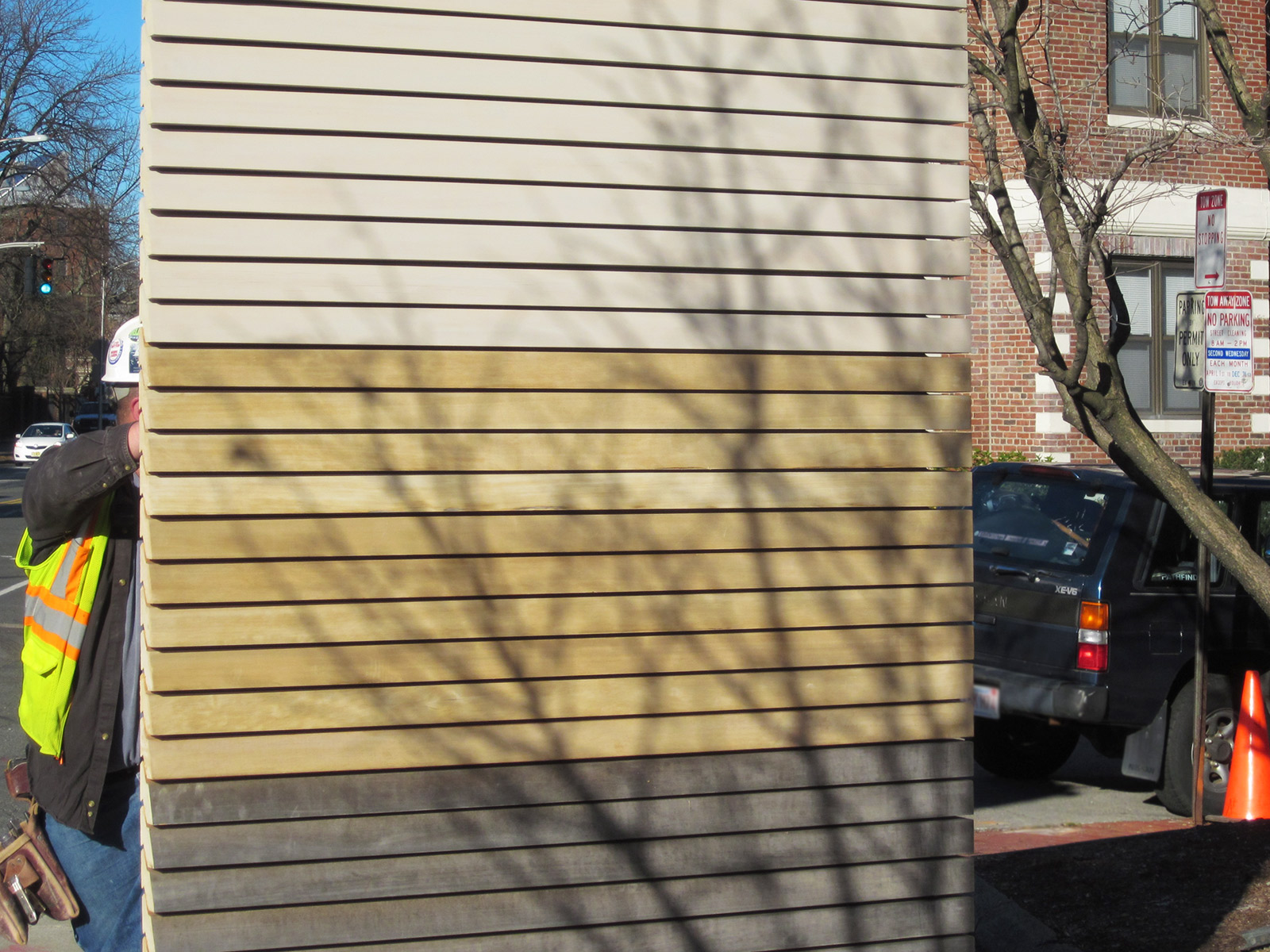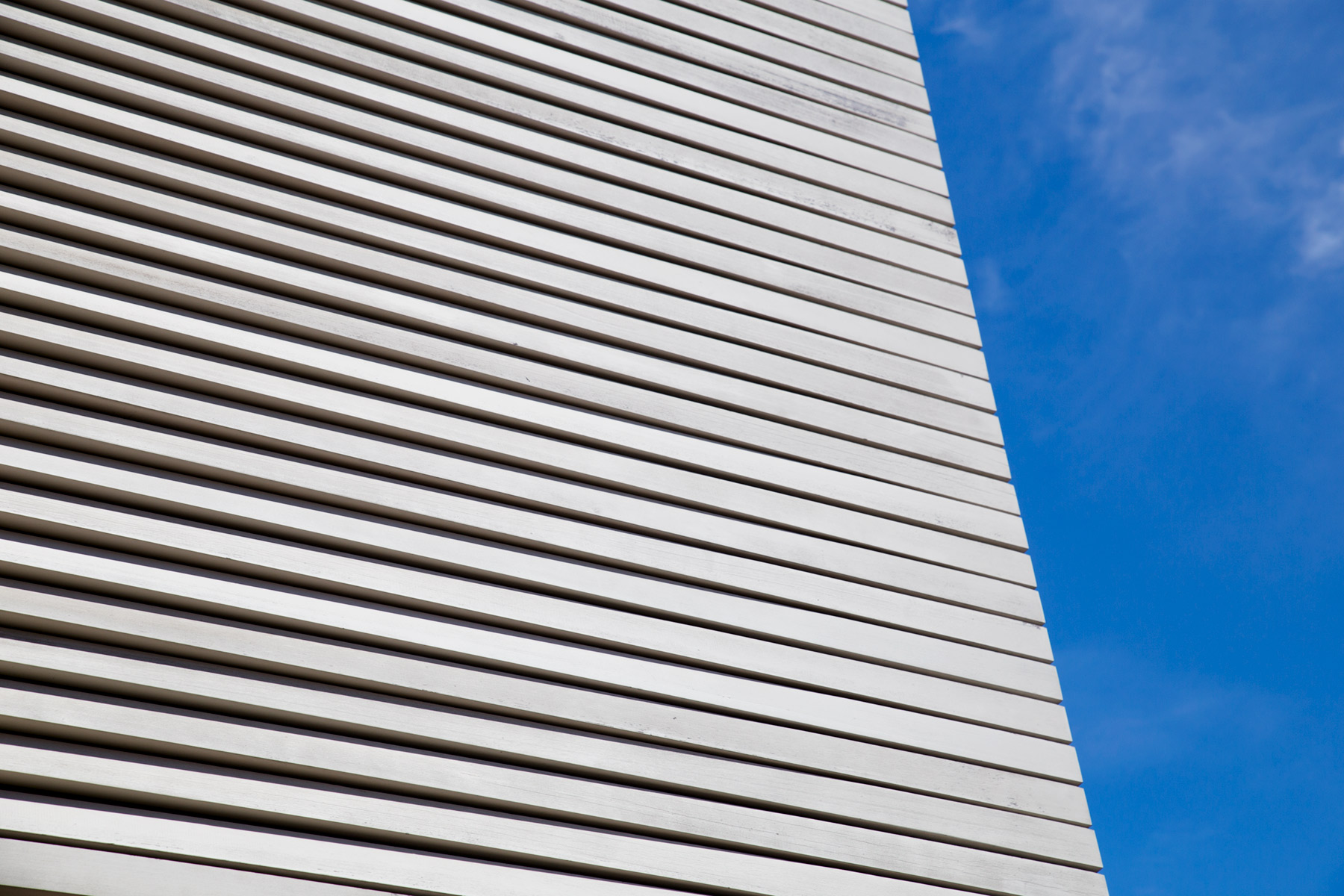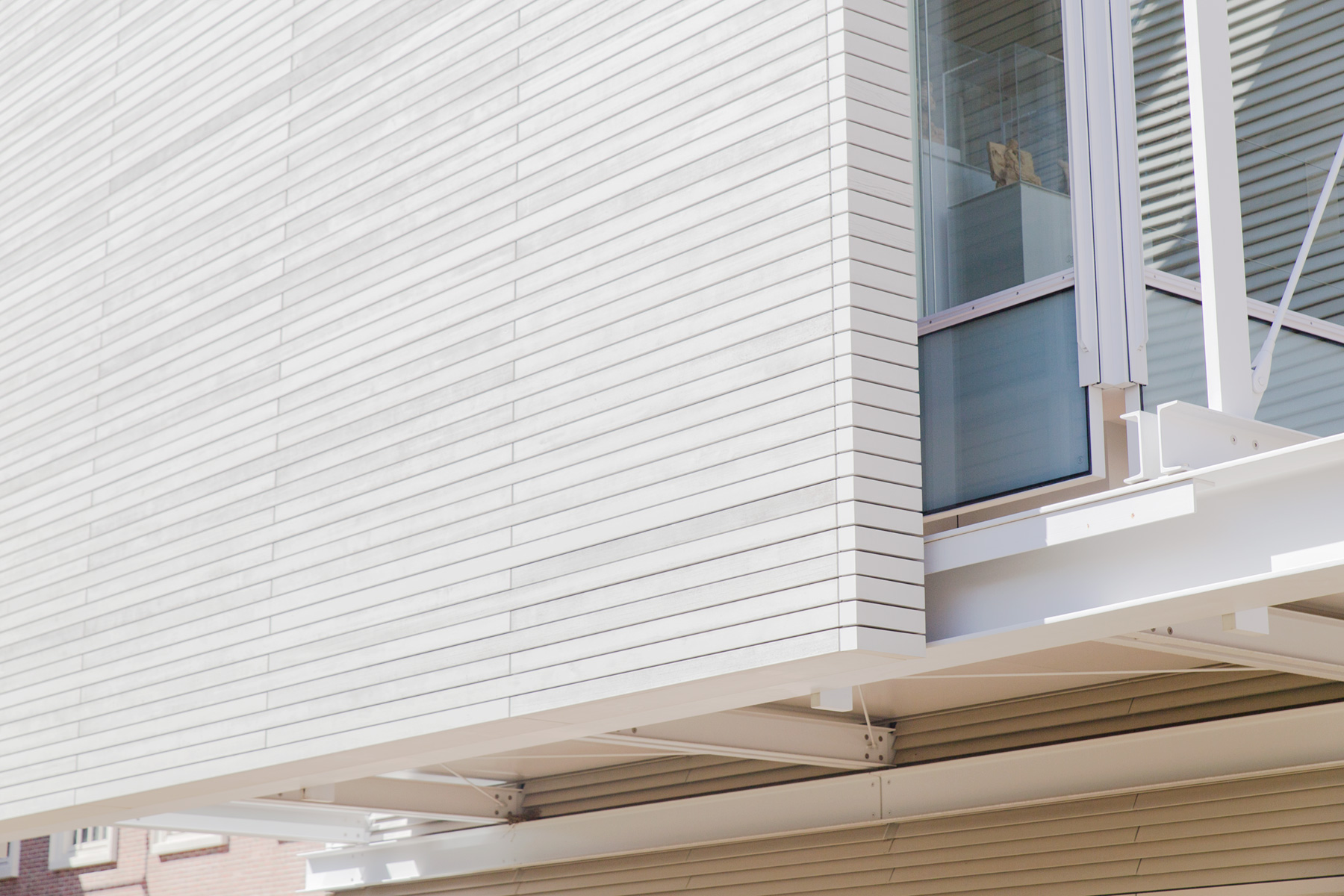You might have noticed that the weather has taken a toll on the gray siding of the museums’ Prescott Street addition; while the wood stain was once monotone, you can now see some areas where the stain is clearly fading.
But not to worry—everything’s under control.
In fact, said Peter Atkinson, the museums’ director of facilities planning and management, “It’s willful neglect. We know exactly what the wood’s doing—the stain is starting to wear off, and it wears off unevenly. But we’re okay with that.”
Why? Because of the design and architectural decisions made more than five years ago during the museums’ renovation and expansion, led by the Renzo Piano Building Workshop and local design partner Payette. Piano, an Italian, was astonished at the longevity of classic coastal New England houses and the wood siding on them. He especially admired the look of Nantucket beach cottages, which are known for their gray, weathered cedar shingles. That aesthetic was ultimately what Piano intended for the contemporary exterior of the Harvard Art Museums, and that’s what we’re slowly but surely achieving.
The wood facade—which acts as a protective screen to the interior vapor barrier, but which has negligible insulation properties—is made of Alaskan yellow cedar. This very dense wood is highly resistant to disease and water damage. “Piano selected Alaskan yellow cedar knowing it would be solid and stable over its lifetime,” Atkinson said. “It will likely outlast us all.” Wood scientist Ron Anthony, based in Fort Collins, Colorado, has attested that the pieces used on the building could remain healthy for 400 years. What’s more, this type of wood has the visual characteristics Piano sought: initially a golden hue when harvested, it turns silvery-gray within just a few years.
The lumber was harvested in 2010 in British Columbia and brought to 32 Quincy Street (then under construction), where it was allowed to adjust to the local climate. During this time, the team tested various stains on samples of the wood, to assess how the wood aged and weathered outdoors. They found that it took about 18 months before the wood’s natural silvery-gray tone began to appear, so they decided to initially stain the wood for the building’s opening, ensuring that it was a consistent color and would look “fresh.” The stained wood was cut and installed by Mark Richey Woodworking of Newburyport, Massachusetts.






